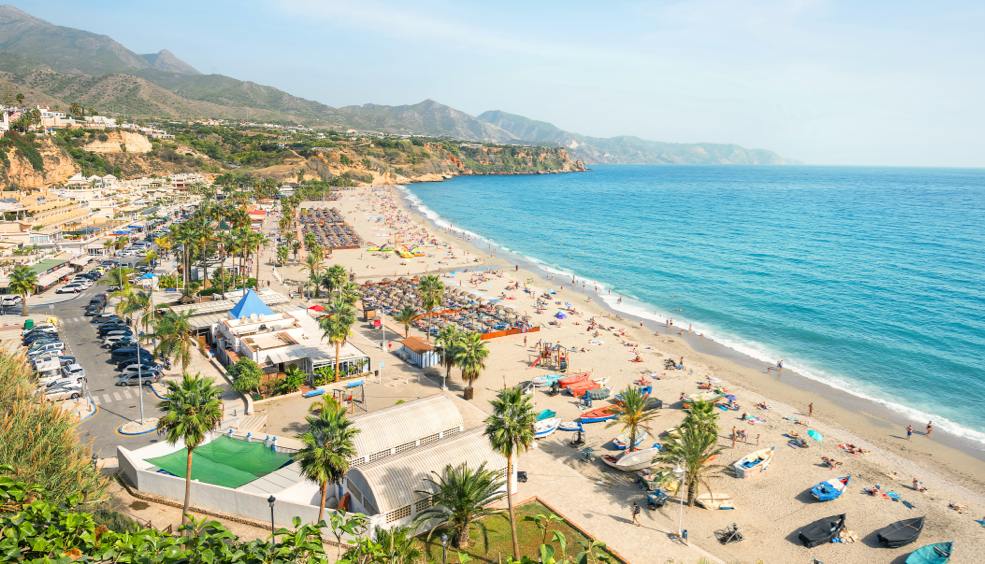7 Essential Travel Apps
If you want to be mistaken for a local at any destination you visit, make sure you have the hottest travel apps on your phone. From Google Trips to Maps.me and Currency, we give you the low down on our favourite apps so you can bear them in mind when preparing your next trip.
more infoNew routes from London to Spain with Vueling
Gatwick Airport now has direct flights to Malaga (Costa del Sol, Andalusia), Seville (Andalusia), Granada (Andalusia), Almería (Andalusia), Cádiz (Jerez, Andalusia), Menorca (Balearic Islands), Oviedo (Asturias) and A Coruña (Galicia).
more infoBilbao BBK – the Northern Spain Festival
Bilbao BBK has been with us for twelve years now – that’s quite a feat. A well consolidated festival which manages to compete with some all-powerful musical events in Barcelona and Madrid within a similar timeframe. The reason for its success is simple – its lineup of artists has been steadily growing in prestige and popular appeal. BBK, which is held this year from 6 to 8 July 2017, features some awesome names. The lineup of markedly varied musical styles is headed by Depeche Mode, Phoenix, Fleet Foxes, Die Antwoord, The Killers, Two Door Cinema Club, Justice, The Avalanches and Brian Wilson, among others. If you want to attend the concerts, there are still available some 3-Day Tickets and room in the campsite, should you prefer to steer clear of hotels and instead be more adventurous.
One of the hallmarks of this festival is the grounds it is set in. Monte Kobetas (also known as Kobetamendi), is one of the city’s iconic playgrounds. This elevated, forested area affords spectacular views of Bilbao, apart from acting as one of its lungs and a spot where Bilbaines do sport and go for picnics. However, the precinct is off limits to the general public for the duration of BBK, when it is repurposed solely to music. Access to Kobetamendi is a simple matter; in fact, a couple of free bus lines are laid on for the event by the organisers, facilitating access to the festival precinct for all attendees.
Over and above the musical offerings, BBK provides the perfect excuse for getting to know other places in Bilbao, too. Here are a few proposals for early risers eager to explore the city on foot.
The Best “Pintxos”
It’s a cliché, but it’s actually true – if you visit Bilbao, you simply have to eat pintxos more than once. It is an unwritten norm. And, Bilbao happens to have some of the best bars serving up this culinary speciality. To score a bull’s-eye with your pintxos, the best thing is to head for the city’s historic centre, an area crammed with restaurants of tried and tested quality. Four of them we can highly recommend are Gure Toki,Txiriboga,Motrikes and Askao Berri.
A Touch of Art
As luck would have it, BBK coincides with one of the pictorial exhibition highlights of the year, which is still on in the Guggenheim Bilbao, namely Paris, Fin de Siècle, an exhibition showcasing the work of the most prominent late-19th-century French and European painters. It would be unthinkable not to dive into the museum to see paintings by Toulouse-Lautrec, Signac and Redo, among others, before going up to the Kobetamendi precinct to soak up the festival. Oh, and while you’re about it, make sure you don’t miss the museum’s permanent collection, featuring works by the likes of Robert Motherwell, Yves Klein, Andy Warhol, Jean-Michel Basquiat, James Rosenquist, Anselm Kiefer and Gerhard Richter.
Power Records – Bilbao’s Temple of Vinyl
When in Bilbao, dropping in on Power Records is almost as important as eating pintxos if you’re a music aficionado.This legendary store has over twenty-five years’ history behind it. Located on Calle Villarías, near the Old Town and the Nervión estuary, this establishment has a mind-blowing selection of vinyls, both second-hand and imported. This is a veritable sanctuary for music lovers hunting for rare records by their favourite groups. Apart from second-hand albums, Power Records is also dedicated to CDs, reissues and the latest releases. So, if that seven-single by Depeche Mode, or a vinyl of “Pet Sounds” by Brian Wilson has been eluding you, you’re probably going to find it here.
Book your Vueling to Bilbao and let yourself be swept away by the music waves of one of the standout festivals in Spain.
Text by Xavi Sánchez Pons
more info
El 11 deportivo de Barcelona
1.- Museu Olímpic i de l’Esport Joan Antoni Samaranch | In the slopes of the Barcelona ’92 Olympic Stadium there is the museum with the memories of that historic milestone for the city. Next to the stadium, you can also enjoy Palau Sant Jordi, Picornell swimmingpools and other Olympic venues.
2.- Museu del Barça | Beside the Camp Nou, on a day without match, the best thing to do is take the tour to the facilities of the club and wander through the Museum of FC Barcelona, an installation rich in multimedia material and historical memories of the club, such as the boots with which Koeman scored the goal that gave the first European Cup to the club.
3.- Palau Blaugrana| Slightly eclipsed by the majestic Camp Nou. In Palau Blaugrana, lies one of the most familiar FC Barcelona values: its multidisciplinarity. Barça teams of Basketball, Handball, Roller Hockey and Futsal play their games in this ancient but hot venue.
4.- Frankfurt Pedralbes | The most traditional plan for Barça supporters is, before going to the game, stop by the more typical frankfurt of the city to fill the stomach and share the atmosphere with other supporters at a establishment well known by all the locals.
5.- Estadio de Les Corts | Nothing remains of the former FC Barcelona stadium, but in here laid the headquarters of FC Barcelona before Kubala forced the club to build a new stadium (Camp Nou in Catalan). Les Corts became too small when so many people wanted to see the Hungarian genius playing football.
6.- Estadio de Sarrià | Today, it is only still standing the corner gas station from the former RCD Espanyol stadium. But even though to the naked eye are observed only luxury flats, the true football fan in that corner can easily see the World Cup ’82 Stadium where Brazil and Italy left one of the best shocks in the history of the World Cup.
7.- Font de Canaletes | The tourist won’t even see the small fountain that on the right side of the top of the Ramblas observes all visitors if passes distracted. This is the Font de Canaletes where all Barca fans get together to celebrate victories and championships and even the defeats of Real Madrid.
8.- Michael Collins Irish Pub | If there is a football game and you would like to see people drinking beer and having a good time in a good atmosphere, this is the place to be. The most famous irish pub in the city where you will always find people to watch any international match. Overlooking Sagrada Familia.
9.- Hotel Vela | Barcelona coast’s architectural icon, this is the place chosen by FC Barcelona to spend the nights before the important Champions League matches. There begins the seafront promenade that runs all the Barcelona beaches, catwalk full of runners, cyclists, skaters, surfers and beach volleyball enthusiasts. The hotel also houses a cocktail bar with a trendy terrace.
10.- Estadi Cornellà-El Prat | Half field of the stadium is located in Cornella and the other half is in El Prat, hence the name of the new home for RCD Espanyol. A modern and charming stadium full of very passionate supporters. It is worth a visit, while far from the city, and there is a large shopping center in front of the field.
11.- Olímpic de Badalona | Apart from being home to Joventut de Badalona, a traditional Catalan basketball club , any basketball lover should immediately associate this name to ‘Dream Team’. A unique team in the Sports history formed by Jordan, Johnson, Bird and company amazed everyone in the Olimpic de Badalona.
By Panenka www.panenka.org
Picture by Yearofthedragon
So you feel like visiting Barcelona, do you? Book your flights here!
more info




